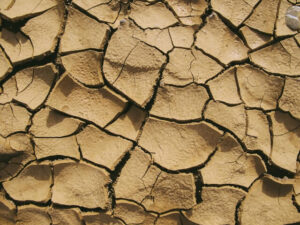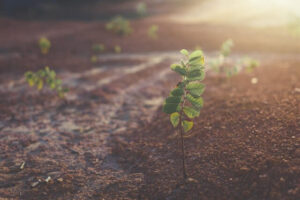In this article, I will teach how to choose a garden spot for your new garden.
Let’s get started.
How to choose a garden spot
Make no mistake in choosing a garden spot when starting a new garden. This is because making a garden on the wrong garden spot will only waste your time and energy.
All the time and energy you invest in picking the right garden plot is worth it. You will never regret it. Therefore, spend time picking a good garden spot.
Choosing the garden spot is not difficult and you don’t need to hire a professional gardener. What you only need is to follow the simple step by step guide that I’m going to discuss in this article and you are done.
1. Avoid Contaminated Spot

how to choose a garden spot
If an area is previously damaged or contaminated by toxins such as lead, that area may be dangerous to be picked as a garden spot.
This is because when plants are grown in that place, they can absorb the lead into their systems. So, when these plants are taken by humans as a source of food, they can cause harm to people in the form of lead poisoning.
Therefore, it is always important to avoid contaminated areas when you are looking for a new garden spot.
Learn more about how to check soil contamination here.
Recommended: want to level up your gardening knowledge? Here are 5 best gardening courses that can take you from beginner to a seasoned gardener.
2. Pick a Spot with Source of Water
Water is an unavoidable part of any living thing. All living organisms need water to survive. Plants require water to carry out different biological activities, which include transpiration and photosynthesis.
Locating your garden near a good source of water can help you with a lot of garden-related tasks. And more importantly, your plants can grow and produce beautifully and successfully.
Therefore, it is a good choice to pick a garden spot with a good source of water. Having a space with poor water drainage and retention? Read our miracle gro water storing crystals review to learn how to solve this problem.
Related: How to make compost at home with pictures
3. Choose a Good Plot with Enough Sunlight
Plants require sunshine/sunlight to carry out photosynthesis. And this is the primary mechanism in which plants utilize to synthesize their own foods.
So, in the absence of sunlight, plants cannot synthesize foods and they may die up as a result.
Choosing a garden with a good source of water is an important step in establishing a new garden that cannot be skipped.
This is because if you skip this step and choose an area that does not receive sunlight all day round or receive partial sunlight, your plants will not grow well and they may eventually die up.
So, when you are picking a new garden spot, choose an area that always receives at least 6 hours or more of sunlight daily.
Related: How To Select Quality Seeds For Planting Step By Step Guide
4. Avoid Spot with Frequent Natural Disasters
Natural disasters include flooding, earthquake, volcanic eruption, and heavy wind. You do not need to start your new garden in such areas.
Imagine after wasting all your energy and time just to see your garden grow beautifully and successfully but later you discovered that it was swallowed by flooding or eaten by an earthquake.
That is unfortunate. And you need to avoid that by not picking such areas that have experienced such kind of natural disasters before.
Learn more about natural disasters here.
Read also: How Does A Plant Grow Step By Step
5. Choose a Garden Spot with Wind Protection
A spot with high wind speed and without windbreakers is not an ideal area for gardening.
Pick a good garden area that has windbreakers so that these windbreakers can reduce the wind speed and prevent its effects on your garden plants.
If you grow plants in an area with high wind velocity, your garden plants can be damaged by this high-speed wind either prematurely or when fully grown.
Additionally, all the irrigation that you may be done will go in vain. Because the moisture or relative humidity of the soil will also be affected by the wind.
This is not good for your garden plants and can cause plant breakage and desert encroachment.
6. Avoid Pests or Insects Dominated Spot
When starting a new garden, you need to avoid the area that is dominated by pests such as insect pests.
These pests can limit the success of your garden.
Pests such as stem borer, nematodes, Aphids, Thrips, and mealybugs are reported to cause serious damage to plants each year. They affect plant growth and productivity.
Related: What Are The Best Garden Seeds To Buy? The Ultimate Garden Seeds Buying Guide
7. Pick a Garden Spot with Good Topography
While choosing a garden spot, you need to pick a spot with flat topography (an area with a flat surface). Do not start a garden on hills, slopes, or an area with logs.
If you establish a garden on areas like hillside and logs, your garden plants may not perform well until you put an extra hard work such as employing other forms of garden techniques.
Moreover, these areas usually drain water and nutrients downhill so easily. And this is very bad for plant growth and productivity.
However, if you can’t find other spots to start your new garden and you get only a hillside or slope spot, you can use this kind of spot but you need to spend money and put in extra hard work such as tilling of the hillside, filling of logs and holes, and adding of compost and inorganic fertilizers.
You can alternatively use raised garden beds or container gardens.
Related: How to prepare a garden spot step by step
8. Choose a Garden Spot with Good Soil

how to choose a garden spot
Your attention should first be drawn to the quality of the soil of the garden spot. Plants quality soil for proper growth and productivity.
But, what is quality soil?
A quality soil can simply be described as a soil that does not retain and drain water beyond the optimal level and can support plant growth.
The above definition only looks at the water holding capacity of the soil. However, there are other important factors that describe the quality of the soil.
Healthy plants growth also depends on soil:
- PH level
- Relative humidity
- Soil Texture
- Nutrients
PH Level of Soil
The PH level of garden soil should be optimal. Plants usually do not tolerate high acidic or basic environments.
Therefore, quality soil should be neither too acidic nor basic. To know the PH level of the soil, carry a small sample of the soil to the lab for tests.
After a test, the lab technician will let you know whether the soil of your chosen garden spot is good for gardening or not.
Relative Humidity of the Soil
Another important factor that determines the quality of soil is relative humidity. If the soil of your chosen garden spot has poor soil relative humidity, your plants may suffer serious transpiration, which is bad for plant growth.
You need a location with optimal atmospheric and soil moisture. This kind of place can support plants without the need for too much watering or irrigation.
Soil Nutrients
The quality soil should contain enough nutrients that can support plant growth without much supplementation. The soil must have some reasonable amount of decayed organic matter.
Soil Texture
While choosing a garden spot, do not pick one that is sandy or Clavey. Sandy soil does not retain water and this is not good for the plants.
Likewise, clay soil is bad for plant growth because the soil has not proper drainage for water. Good agricultural soil and also for gardening is loamy soil.
This type of soil does not retain water and also does not drain water like sandy soil.
So, quality soil can be described as soil that is neither sandy nor Clavey. It is also soil that contains a reasonable amount of organic matter and has an optimal PH level and relative humidity.
Read also: How To Make A Garden In Your Lawn
Takeaway
Five factors to consider in selecting a suitable garden site
When selecting a suitable garden site, consider these five factors:
Sunlight: Ensure the chosen location receives adequate sunlight, typically 6-8 hours per day, for optimal plant growth.
Soil Quality: Assess the soil’s composition and fertility. Soil should be well-draining, nutrient-rich, and have a pH level suitable for the types of plants you plan to grow.
Water Access: Access to a consistent water source is crucial for irrigation. Choose a site where you can easily provide water to your garden.
Space and Size: Determine the available space and plan the garden size accordingly, considering the types and quantities of plants you want to cultivate.
Microclimates: Be aware of microclimates within your chosen site, as factors like wind patterns, frost pockets, and nearby structures can affect plant health.
Frequently Asked Questions
Is morning sun or afternoon Sun better for a Garden?
The morning sun is preferred for plants over the afternoon sun. This is because the afternoon sun is usually hotter than the morning sun and can bleach the leaves of plants.
Most plants such as vegetables require full sunlight, which ranges from 6-8 hours daily.
What is the Best Position for Vegetables Garden?
Most vegetables grow well under full sunlight. For example, tomatoes require all day sunshine, while leafy green vegetables and soft fruits are more satisfied with little sunlight.
How deep do you need to Till a Garden?
Tilling can vary from one garden soil to another. For instance, if you are starting a new garden bed on a hillside or poor soil, you can till the soil up to 8-10 inches deep.
However, if the soil is shallow, you can till 4-8 inches while mixing garden soil amendments in a garden bed.
How many times should I Till my Garden before Planting?
Usually, tilling is needed to be done once a year. This is enough to keep the garden soil healthy. However, it is good to figure out a specific time of tilling that matches best with your gardening schedule.
Wrapping Up
Choosing the wrong garden spot and planting your seeds or transplants on this spot will be your first greatest gardening that can destroy every effort you put in the garden creation process.
In this article, we looked at how to select a garden spot in a step by step guide. We hope you will find the article helpful. So, don’t forget to let us know your questions in the comments section below.
Reference
- University of Hampshire | Preparing a Vegetable Garden Site, retrieved from here
- Selecting a Site for Your Vegetable Garden, University of Florida

